advanced optical designs specializing in Raman spectroscopy
Optical Fiber Probes For Biomedical Spectroscopy

EmVision’s fiber optic probes and Raman spectrometers have been designed to be used in combination to maximize the performance of our Raman system. From the lensed and filtered probe tip, through our multi-fiber spectrometer connector and our specialized spectrometer grating and lenses, EmVision’s Raman spectroscopy systems will maximize your light gathering capabilities.
Raman Probes
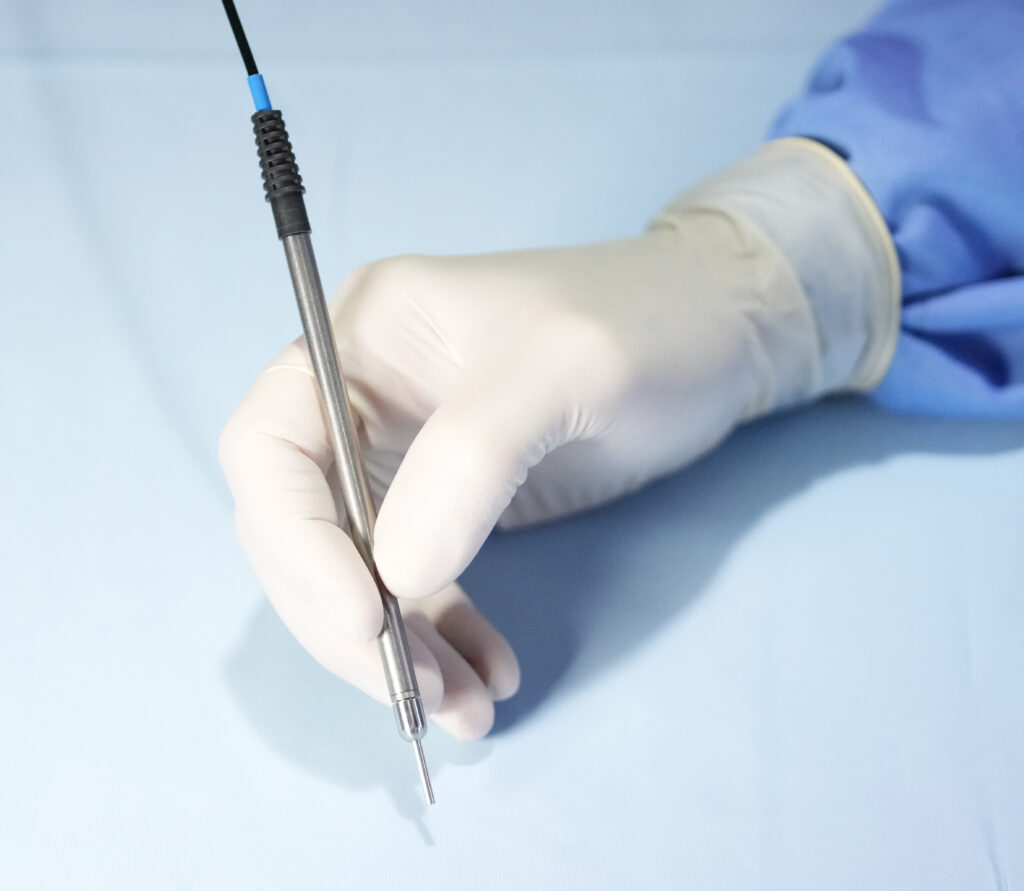
Laboratory Probe
P/N: HT-PROB-LAB-785-1.5
The Laboratory Probe is a Raman filtered and lensed probe that can be used in different applications and across many industries. The stainless steel probe tip has a 2.1 mm (0.083 inch) OD and is 10 cm (4 inch) in length. A removable wand with a 6.35 mm (0.25 inch) OD is available to make it easier for a user to hold. The overall standard length is 1.5 m (5 feet).
The Laboratory Probe has a single laser emitting fiber (typically 300 µm) and seven collection fibers (typically 300 µm) that connect to the spectrometer. At their ends, the emitting fiber has a band-pass filter and the seven collection fibers have a donut shaped long-pass filter that rejects the laser light. A converging lens in the probe tip makes the probe function as a contact probe. The probe tip’s outer contact surface can be either fused silica, sapphire or typically magnesium fluoride and this is part of a two-piece lens (the second lens being either silica or sapphire). The optical elements are permanently fixed in alignment so there is no possibility of movement.
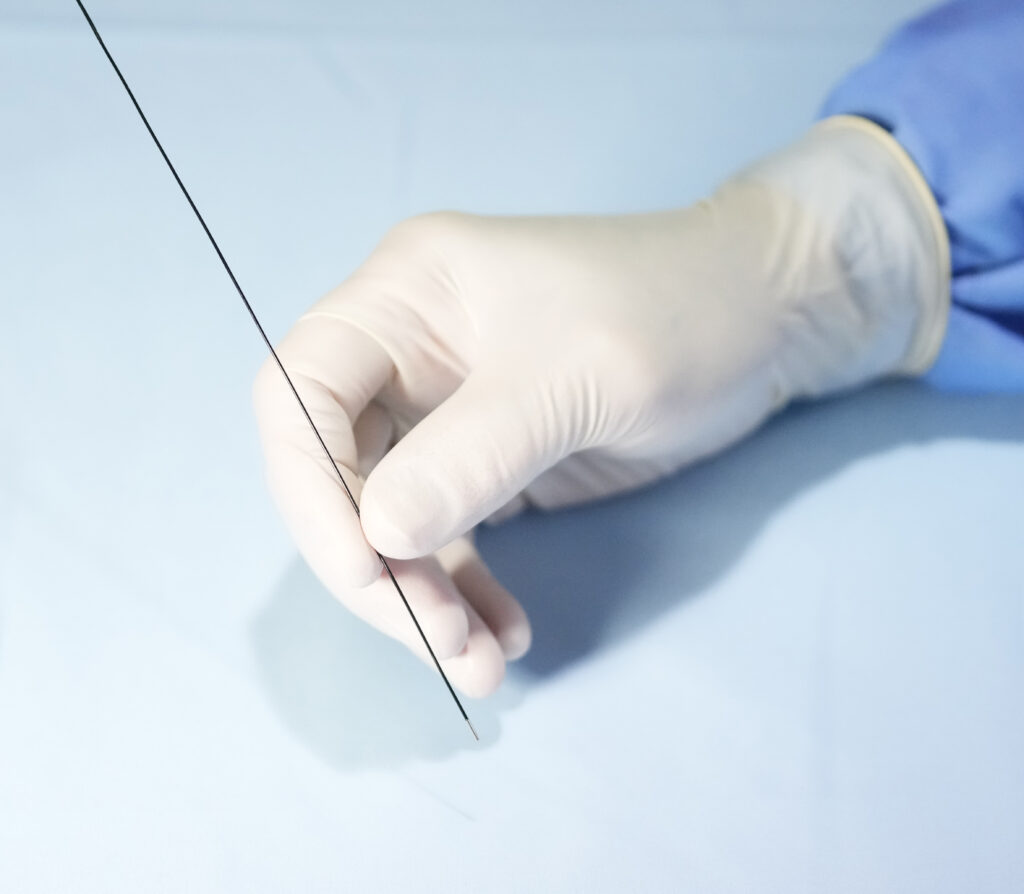
Endoscopic Probe 1.65 mm Diameter
P/N: HT-PROB-ENDO1.65-785
The Endoscopic Probe 1.65 mm diameter is the smallest Raman probe on the market, and incorporates the same general design as the Laboratory Probe. The small tip (both diameter and length) allows for endoscopic entry and maximum flexibility.
The stainless steel probe tip has a 1.65 mm (0.065 inch) OD and a 5 mm (0.197 inch) rigid length. The overall standard length is 3.0 m (10 feet). The Endoscopic Probe 1.65 mm has a single laser emitting fiber (typically 200 µm) and eleven collection fibers ( 200 µm) that connect to the spectrometer. At their ends, the emitting fiber has a band-pass filter and the eleven collection fibers have a donut shaped long-pass filter that rejects the laser light. A converging lens in the probe tip makes the probe function as a contact probe. The probe tip’s outer contact surface can be either fused silica, sapphire or typically magnesium fluoride and this is part of a two-piece lens (the second lens being either silica or sapphire). The optical elements are permanently fixed in alignment so there is no possibility of movement.
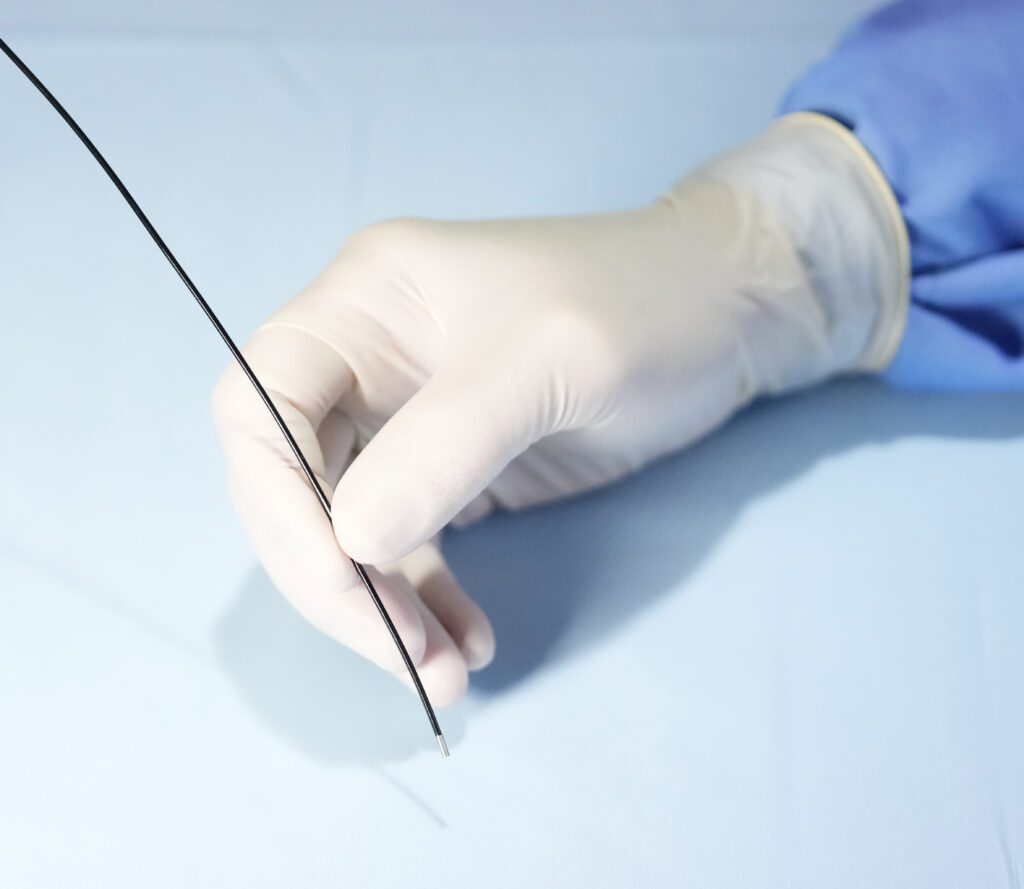
Endoscopic Probe 2.1 mm Diameter
P/N: HT-PROB-ENDO2.1-785
The Endoscopic Probe 2.1 mm is a larger diameter Raman endoscopic probe than the 1.65 mm version endoscopic probe. The small tip (both diameter and length) allows for endoscopic entry. It incorporates the same general design as the Laboratory Probe. This endoscopic version offers more light gathering capability, better durability but less flexibility than the 1.65 mm endoscopic version.
The stainless steel probe tip has a 2.1 mm (0.083 inch) OD and a 6.5 mm (0.256 inch) rigid length. The overall standard length is 3.0 m (10 feet). The Endoscopic Probe 2.1 mm has a single laser emitting fiber (typically 300 µm) and seven collection fibers ( 300 µm) that connect to the spectrometer. At their ends, the emitting fiber has a band-pass filter and the seven collection fibers have a donut shaped long-pass filter that rejects the laser light. A converging lens in the probe tip makes the probe function as a contact probe. The probe tip’s outer contact surface can be either fused silica, sapphire or typically magnesium fluoride and this is part of a two-piece lens (the second lens being either silica or sapphire). The optical elements are permanently fixed in alignment so there is no possibility of movement.
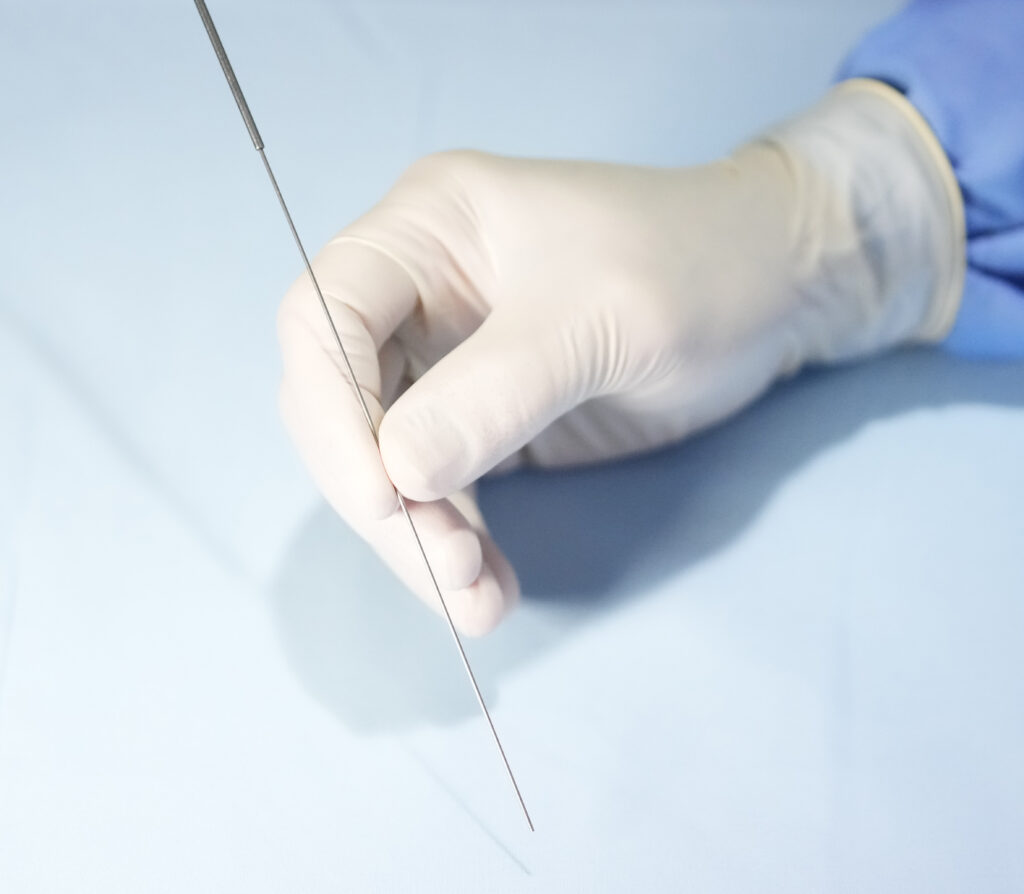
Needle Probe
P/N: HT-PROB-NEEDLE1.65-785
The Needle Probe is based on the Endoscopic Probe diameter but has a much longer rigid probe tip length. It incorporates the same general design as the Lensed Probe. The small tip diameter allows for needle like entry and investigation.
The stainless steel probe tip has a 1.65 mm (0.065 inch) OD and the length can be variable. The overall standard length is 3.0 m (10 feet). The Needle Probe has a single laser emitting 300 µm fiber and eleven 200 µm collection fibers that connect to the spectrometer. At their ends, the emitting fiber has a band-pass filter and the six collection fibers have a donut shaped long-pass filter that rejects the laser light. A converging lens in the probe tip makes the probe function as a contact probe. The probe tip’s outer contact surface can be either fused silica, sapphire or typically magnesium fluoride and this is part of a two-piece lens (the second lens being either silica or sapphire). The optical elements are permanently fixed in alignment so there is no possibility of movement.
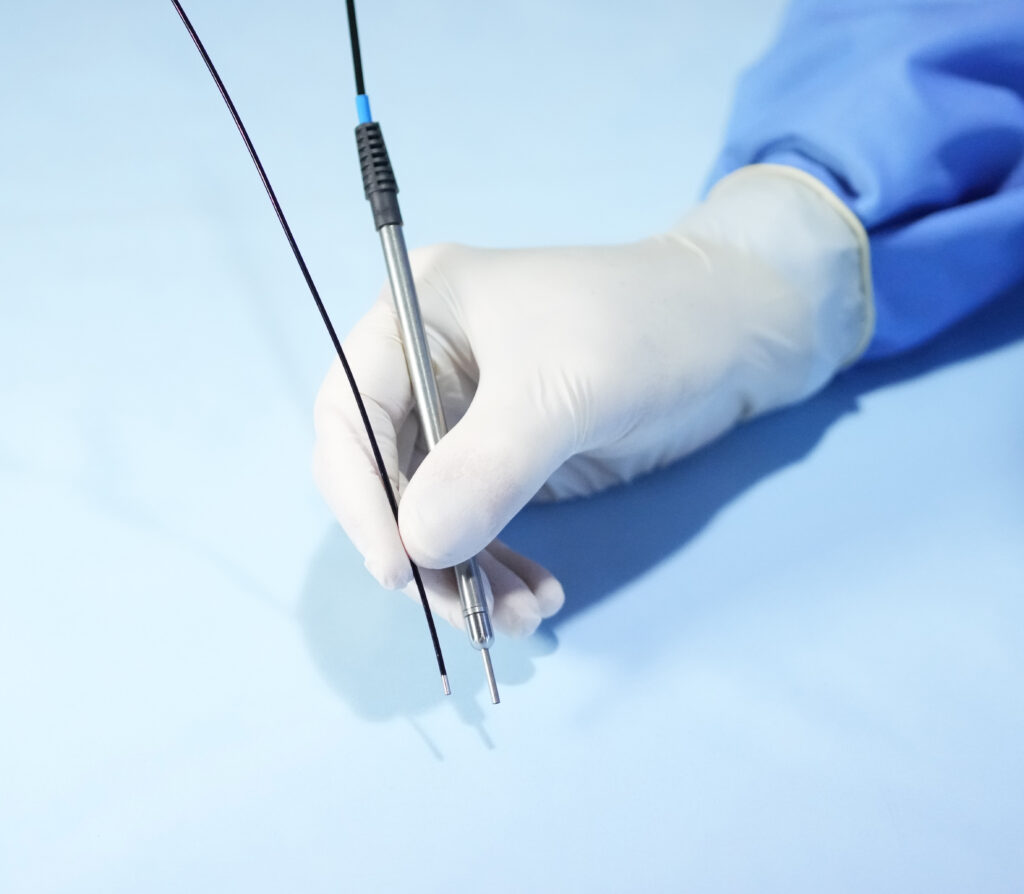
Multi-Spectroscopy Probe
P/N: HT-PROB-MULTI-785
The Multi-Spectroscopy Probe combines Raman, diffuse reflectance spectroscopy (DRS), intrinsic fluorescence spectroscopy (IFS) or Optical Coherence Topography (OCT) in a single probe. The probe allows for acquisition of spectra associated with Raman and IFS for two excitation wavelengths, and DRS from a broad-band white-light excitation source. DRS and IFS is in the UV/visible/NIR wavelength region, and Raman is in the near IR region. The benefits of applying the right spectroscopy to detect the optimal information can be realized in a single probe. The stainless steel probe tip has a 2.1 mm (0.083″) OD and is 10 cm (4 inch) in length. A removable wand with a 6.35 mm (0.25 inch) OD is available to make-it easier for a user to hold. The overall standard length is 1.5 m (5 feet).
The Raman portion of the probe has a single laser emitting 300 µm fiber and seven 300 µm collection fibers, and the filters and lenses are arranged similar to the Laboratory Probe. The DRS and IFS portion of the probe uses two 300 µm fibers; either one of these fibers can be used for DRS or IFS light delivery and the other fiber being used for DRS or IFS light collection. The optical elements are permanently fixed in alignment so there is no possibility of movement.
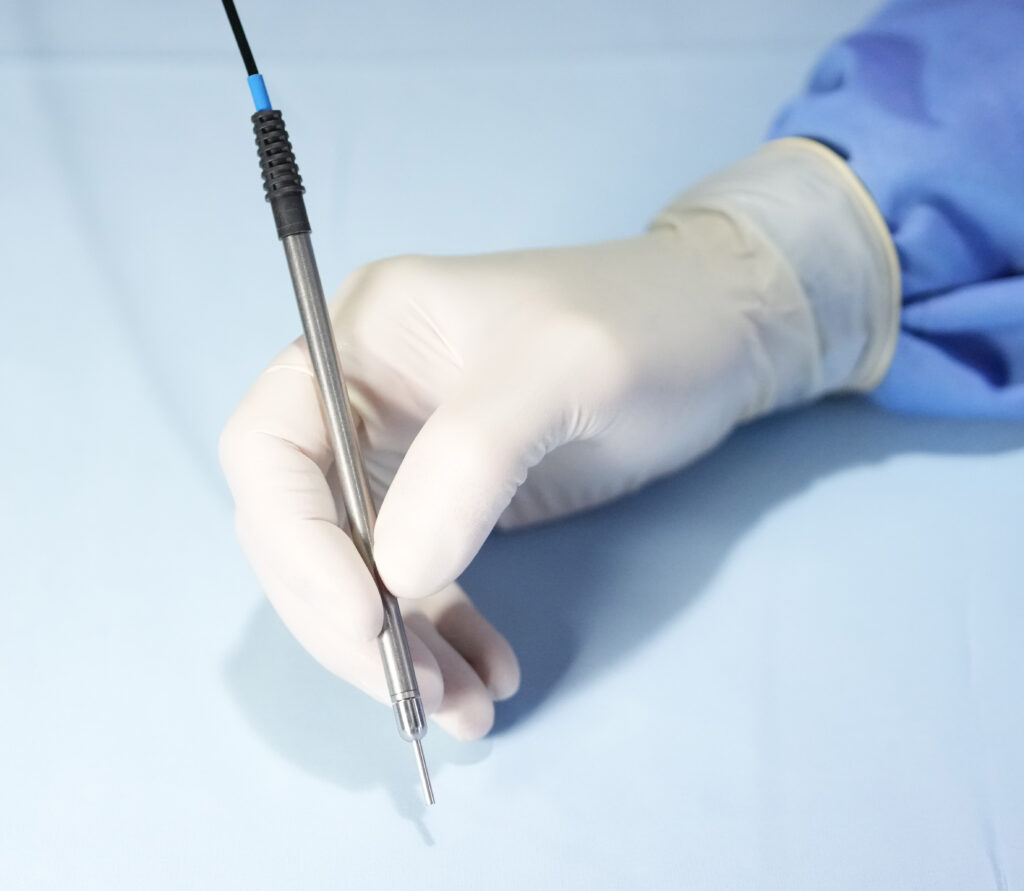
Ultra Probe
P/N: HT-PROB-ULT-785
The Ultra Probe is a Raman lensed probe that has been designed to collect the maximum amount of light from its diameter constraint. In order to effectively use all the collection fibers within the probe, the Ultra Probe must be coupled with the appropriate EmVision spectrometer. The stainless steel probe tip has a 2.4 mm (0.094″) OD and is 10 cm (4″) in length. The overall standard length is 1.5 m (5′).
The Ultra Probe has a single laser emitting fiber (typically 300 µm) and twenty one collection fibers (typically 300 µm) that connect to the spectrometer. At their ends, the emitting fiber has a band-pass filter and the twenty one collection fibers have a donut shaped long-pass filter that rejects the laser light. A converging lens in the probe tip makes the probe function as a contact probe. The probe tip’s outer contact surface can be either fused silica, sapphire or typically magnesium fluoride and this is part of a two-piece lens (the second lens being either silica or sapphire). The optical elements are permanently fixed in alignment so there is no possibility of movement.
Contact us to discuss your application’s unique requirements so that we may design the ideal probe to make your research a success.
